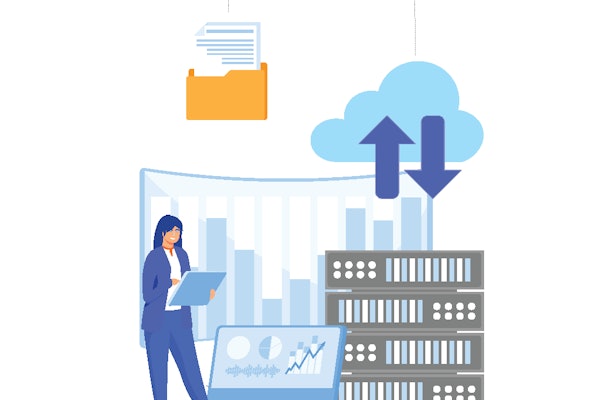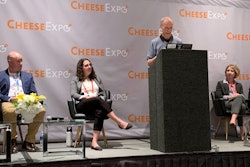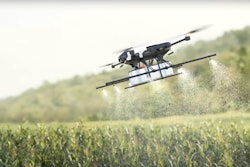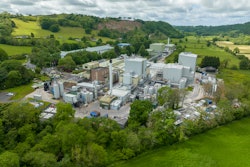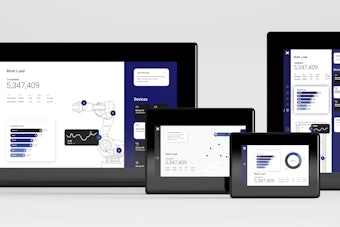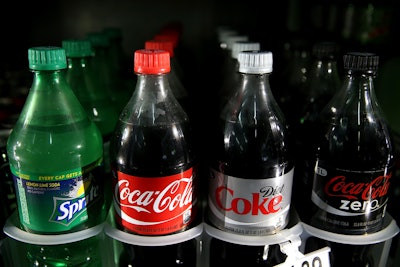
The following is a transcription of an Innovation Stage presented Tuesday afternoon, November 10, during PACXK EXPO Connects. Watch the discussion here until March 31.
Hello, welcome to the beverage industry overview from the Beverage Institute. This is... I'll start over again on this slide. Presented by Tom Rymer. I'm the ISBT director of education for the Beverage Institute.
Our agenda today is to provide you a broad view of the scale and nature of the beverage industry. We will talk about the history of beverages, what the beverage market looks like, how to get beverages to the market, then peek into the future.
A little history. The timeline shows selected milestones of the beverage industry, starting with Englishman Joseph Priestley. Interesting, Priestley was considered for the position of astronomer on the James Cook's second voyage to the South Pacific. He was not chosen. Still, he contributed a small way. He provided the crew with a method of making soda water, which he erroneously thought would cure scurvy.
Between 1980... Let me get started on this slide. A little history. The timeline shows selected milestones of the beverage industry starting with Englishman Joseph Priestley. Interesting, Priestley was considered for the position of astronomer on the James Cook's second voyage to the South Seas, but was not chosen. Still, he contributed a small way to the voyage. He provided the crew with a method of making soda water, which he erroneously speculated would cure scurvy.
Between 1885 and 1898, Coca-Cola, Dr. Pepper, and Pepsi were invented. In 1952, Kirsch was the first to use an artificial sweetener called calcium cyclamate to sweeten his first diet soda, a ginger ale, which he called No-Cal.
In 1953, the ISBT was formed, then known as the Society of Soft Drink Technologists.
What beverages are we talking about? Primarily it's soft drinks, known as CSDs; water, both sparkling, still, and flavored; dairy and alternatives; juices; coffees and teas; enhanced still drinks, such as energy drinks, sports drinks, nutraceuticals, and powders and blends.
Global market share. Asian soft drink consumption in terms of growth potential of the drinks market. Asia has large population and growing economies. The USA has three urban centers that have over 8 million in population. They are LA, New York, and Chicago. Latin America has four, São Paulo, Mexico City, Lima, and Bogota. Europe has two, London and Paris. Well, Asia has 25. India has four, China has 11, and Vietnam has two. This population in Asia will dominate growth.
Global beverage categories. There are 13 categories of beverages that are tracked. Carbonated soft drinks and water are 60% of this volume. The other 11 are the high active in innovation and growing fast.
Water takes the lead. Bad publicity around HFCS, sucrose, and sugars in general, and artificial sweeteners continues to take its toll on CSDs and juices. A gallon of water is almost free from the faucet, but packs of water can cost more than a gallon of gasoline.
So water in 2015 became the highest, most popular beverage category. In 2015, CSDs saw a volume of growth of just 1%. Since that time CSDs have shrunk in volume. In 2015, juice volume shrank as an agricultural disease known as greening has reduced the Florida orange crop to 40% of its peak size, driving the prices up and the quality down. Juices have faced attacks on its high calorie content in spite of its many nutritional benefits.
The shifting beverage landscape. Total market is growing at slower rates, but CSD and fruit juices are declining, while the new categories continue to grow at rapid rates.
Growth is away from traditional products. In general, traditional mass market categories have struggled while the niche categories experience growth. Bottled water is the primary example of a mainstream category that has thrived during this time period.
Food and beverage companies. Ten companies own most of the food and beverages that we buy today. Coke, Pepsi, Dr. Pepper are 75% of the CSD market. Growth is in innovation, and large companies often gain innovation by buying successful startups. But where does growth and innovation come from? From private label, especially passing trends. Look out for the small guy. Small innovators are rising to the challenge. Social media and online sales platforms are providing opportunities. Contract manufacturers are consolidating, creating a viable national network of production and distribution.
Craft sodas is growing with many small players. Just like craft beers, everyone wants something different. You can have flavors that are unique, seasonal, regional, even local. Online marketing sales capabilities, along with contract manufacturing, have opened the door for these micro companies to thrive.
There are two types of supply chains in the beverage industry. One is formula-based, which has standardized ingredients, standardized mixing and filling, and then creates a standardized finished product. Recipe-based has variable raw materials. It has blending, adjustments, fillings, techniques, and along with specialized processing, these combined must be manipulated to create a standardized finished product.
The formula-based supply chain is typical of Coke, Pepsi, Dr. Pepper, and others and corporate groups of these companies manage the marketing, concentrate, manufacturing product, and [inaudible 00:06:45] development, along with the quality standards. Operational groups produce, deliver, and sell the product to the trade.
The beverage franchise system. The parent company would typically be a Coke, a Pepsi, or a Dr. Pepper. They would franchise territorial rights to produce and sell the product. The parent company is also referred to as the brand. Franchisees have exclusive bottling appointments to make, sell, and deliver in their territory. These franchises are often called bottlers, an old term for the days when the product only came in bottles.
Bottlers can be independent, can be owned by the parent company, or a parent company can have a large share of the bottler. However, they act and are known as two distinct entities. The brand owner typically manages marketing, maintaining quality standards, food safety oversight, and R&D activities.
Recipe-based supply chain. It requires worldwide small time frame window for purchasing the annual supply of materials and a seasonal sourcing of ingredients. It has multiple step processing that include raw material processing, say, fruit to juice as an example, partial pre-batch [inaudible 00:08:00] formal adjustments to balance raw material variation is needed to meet the final product specs. Prepackaging can require single stream batching, homogenization, filtration, pasteurization, and other specialty process steps. Each production operation may have to batch from scratch.
The evolution of beverage choices. The key takeaway is that the consumer is demanding mass customization. One size or product does not fit all. As you can see from the chart, growth in variations has increased each decade and continues to expand.
A few requirements are being identified. A product needs its appearance to be attractive so that the consumer will be willing to drink it. A product also needs to have a good appearance so the consumer will feel he has something special in his hands in front of his friends while he's consuming the product. This could be as simple as Starbucks coffee versus non-branded coffee.
Mocktails is a growing category. The ability to have a fancy drink, the image of a well-crafted cocktail with no alcohol is becoming very popular.
Legalization of CBD, THC, and even magic mushrooms are on the horizon and will bring forth a whole new set of products.
Ingredients. Natural is the key word. However, natural is not well-defined, so it makes a unique problem in creating a beverage and knowing which ingredients to use. Consumers have much more awareness, which may not be the truth, but it does define their purchase selection. Moving away from HFCS and sucrose to natural sweeteners, which are higher cost and have flavor drawbacks, is the next challenge.
Process and filling. Beverage creation for the formula supply chain is typically managed by the brand owner or parent company, who creates the concentrate that's sent to the manufacturing company to be produced. But the recipe supply chain can include worldwide sourcing of ingredients, multiple steps of blending, pasteurization, and product steps. The production company will then need to know how to blend, fill, and store the product.
Pasteurization. Some beverages are pasteurized to inactivate [inaudible 00:10:30] reduce microbiological loading, reduce spoiling, and to increase the shelf life without preservatives. There are many types of pasteurization techniques. The most common are flash pasteurization, in which the product is taken to a high temperature quickly and then quickly cooled. This is often known as high temperature short time, HTSD. It's very common in the juice business, like a Tropicana orange juice chilled container or a Minute Maid chilled juice.
In tunnel pasteurization, the beverage is pasteurized by a device that raises its temperature with hot water and then cools it over a period of time. This process is typically used for beer, and it also sterilizes the container so it has an ambient capability to be shown on the shelf.
Hot fill. The beverage is filled at a selected temperature, normally in the 180 degree plus range. Hot beverage is used to sterilize the packaging materials and will enable ambient storage. Commonly used for juices and sports drinks.
Retort, not very common, but the beverage is filled and placed in a chamber under high heat and pressure. This is used for low acid products like chocolate syrup products or frappuccino.
A new technique in recent years is high pressure processing. The beverage is filled in the container and the filled container is placed under high pressure. Commonly used on some of the more natural juice type products and has shown growth in the last few years.
Packaging. How do you stand out on the shelf? Packaging is what draws attention to the product and what protects the product. Shapes, colors, images can be part of the product's identification, part of the overall image.
Ease of use is a selling point. The old target is what does a package look like under fluorescent lighting at three feet, which is the grocery store aisle. Now with online purchasing, the packaging target may be changing.
Packaging complexity increases. As beverage companies continue to proliferate... Excuse me, I'll start this one over.
Packaging complexity increases. As beverage categories have proliferated, so have packaging options. One time, Coke only had a 6.5 ounce bottle. Then they later introduced the 10 ounce bottle with great fanfare. Today, there's no standard sizes. Most size and packs are created to match the retail needs, and volume size can push consumption. They take it home, they will drink it, is the old saying, and it's still true today to some extent.
PET, the leading package for soft drinks. PET is 67% of all beverages, but glass has shown an uptick lately as suddenly craft beer, craft sodas, and other premium products have turned to glass to stand out on the shelf. CSD and water make up 81% of PET volume. Water is 51% of the total. It is the largest PET user.
Water packaging mix. PET is 83% of all water packaging sales. Bottle lightening has been significant for water, and the new recycled materials are being researched for further use. Glass was 30% of this market, but has lost to PET and is now only 5%.
Carbonated soft drinks, CSD packaging mix. PET dominates, but glass is making a comeback with craft sodas and specialty products. Glass is associated with higher quality standards, and specialty products are moving to glass to show they're higher quality and special. Resellability and small size PET have obviously impacted the can volumes.
Juice and nectars packaging. Long dominated by folded cartons... Let me start over again.
Juice and nectars packaging mix. Long dominated by folded cartons, which is also known as board, PE is usually... Oh, I had trouble with this in practice. Let me start one more time.
Juice and nectars packaging mix. Long dominated by folded cartons, which is also known as board, PET use is growing and the most common package for premium products today. Consumers like to see the package, and extrusion molded PET can create handles, which makes the package user-friendly. We will continue to see PET grow in this market.
Sports and energy drinks. Sports is dominated by PET, which is typically sold in larger sizes. Energy drinks is dominated by cans, which often, other than Monster, can be smaller serving sizes.
Iced tea and coffee packaging mix. PE has moved into the premium chilled version. PET. There's still chilled volume in cartons, and cans have declined as carbonated versions have lost popularity. PET continues to be a growth product.
Dairy pack. In the '50, glass bottle delivery by milkman was common. That was replaced by cartons in the retail store. But now that has died and bottles are dominating. ACPE dominates the bottles, the common one-gallon milk jug.
Distribution. Warehouse and transportation is needed to meet temperature, cleanliness standards, and sunlight exposure, and prevent physical damage to the product. You need to maintain your product's quality and appearance throughout the supply chain. High levels of customer service are needed for the retail to continue to stock your brand. If you have issues in supply of the product or stock outs, you may be dropped by the customer. This with other continuing growth in product... Okay. Ugh. Tongue tied myself with this one. Starting over.
Distribution. Warehouse and transportation need to meet temperature, cleanliness standards, and sunlight exposures, and not physically damage the product. You need to maintain your product's quality and appearance throughout the supply chain. High levels of customer service are needed for the retail to continue stocking your brand. Growth in packaging means increased complexity to meet this challenge.
Shelf life. The trade hold is 50% of your shelf life, while the consumer thinks long shelf life on the package means it's overprocessed. So a balance must be met between your needs of distribution and the opinion of the consumer.
There are two types of distribution centers. Direct store delivery, DSD, the beverage company delivers directly to the retail store or the port of consumption, which could be food service, vending machines, convenience, and sales are typically by the case. Delivery is often in specialized trademarked trucks and orders can be for a wide range of products, and quantities can be in case and even at a singles level. This requires geographically spaced distribution centers or sales centers to support the stores' limited delivery timetable.
Warehouse delivery. The beverage company delivers to the retail store's regional warehouse or distribution center. The store company then delivers to the retail store. Delivery options vary, but typically it is a full pallet of a single product.
Fountain is an alternative form of product distribution is through the fountain delivery system. Primarily used in fast food restaurants and other locations that serve you in a cup. Typically is very concentrated product that uses local water and ice so that you can fit a lot of volume into a small space.
Fountains in the past typically had around six flavor options. Cokes Freestyle and Pepsi Spire now can offer almost up to 100 flavor combinations from a single dispensing machine. Also fountain home units are now available and gaining some popularity.
Food safety. Across all aspects of beverages, formulation, production, storage, and use, the beverage industry has developed strong process of documentation to ensure the public safety. This is a growing area of regulatory control and will be a strong focus on the beverage industry.
Future marketplace will be a different arena. Lots of variety. New ideas every day coming into the marketplace. The traditional products will still be the very high volume products, but growth is very limited. New products will be an innovation, excitement, and new benefits to the consumer are the high growth opportunities.
Most emergent categories have health and wellness attributes or promise specific functional benefits. Many will have... Many of these benefits... I'll start this one again, too.
Most emergent categories have health and wellness attributes and are promising specific functional benefit. Many of these new benefits were not known five to 10 years ago, and constantly changed. Some of these may not really provide a real benefit, but the consumer believes and will request and purchase these type items.
Milk is refining to expand its market. Milk is no longer considered the safe and good for you product. Now focuses on added benefits such as calcium, protein, energy, and on-the-go packs. Many new competitive product like oat, almond, and soy milks focus on the new positives in the marketplace.
In summary, short and long-term impacts of COVID still to be determined. Beverages is a dynamic business and ever changing. There are massive volumes of consumption. Refreshing beverage product is the goal. It is a complex distribution system which is changing rapidly as online ordering, at-home delivery, and other new channels open up in the industry. Consumer drives changes at a rapid rate. Companies must learn to be agile, fast, understand the new market quickly, respond to the consumer even though you may not believe it to yourself. Overall, the future is an open book.
Thank you for attending.




